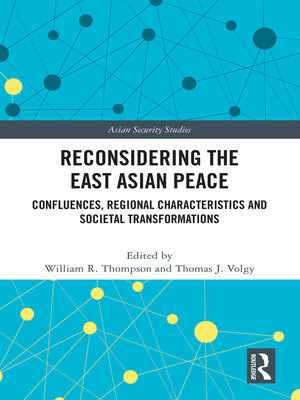Reconsidering the East Asian Peace
ebook ∣ Confluences, Regional Characteristics and Societal Transformations · Asian Security Studies
By William R. Thompson

Sign up to save your library
With an OverDrive account, you can save your favorite libraries for at-a-glance information about availability. Find out more about OverDrive accounts.
Find this title in Libby, the library reading app by OverDrive.



Search for a digital library with this title
Title found at these libraries:
| Library Name | Distance |
|---|---|
| Loading... |
This volume re-examines the notion of the East Asian peace, arguing that it requires updating for the current and near-future context of US-Chinese rivalry.
The "East Asian peace" refers to the remarkable change in conflict levels in eastern Eurasia over the past 80 years or even the past 130 years or so. Prior to the late 1970s, East Asia was regarded as the most conflictual region on the planet. Although insurgencies have continued in places such as Myanmar, Thailand, and the Philippines, after the 1980s East and Southeast Asia became one of the world's least conflictual regions. Geopolitics and economic development worked hand in hand to reduce conflict in the region and, in this respect, the East Asian peace has been a confluential peace. The general problem with a confluential peace is that the factors that shape it evolve over time, and the specific circumstances in question seem to be evolving in a different direction, with East Asia shaping up to be the most central locale of the contest between US and Chinese hegemony, both regionally and perhaps globally. This book argues that the idea of the East Asian peace now requires adjustment to the current and near-future context. The more general arguments presented here focus on alternative interpretations of how regional peace and order should be interpreted, while the more specific arguments involve interpretations of Chinese and other countries' behavior in the context of the heightened rivalry between China and the United States.
This book will be of much interest to students of East Asian politics, peace studies, foreign policy, and international relations.







